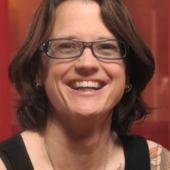Script work
What keeps me up at night?
I toss and turn with insomnia when I think about how new plays are selected for production on American stages around the country. I regularly send plays to potential producers in various roles in their respective organizations. The people I connect with are well intentioned, committed, and intelligent, but the process for assessing new plays, creating conversation around new work, and recognizing the unique role of play development centers in the process is UTTERLY FLAWED. I have endless examples of the nightmare I call the “thoughtful rejection” of the new and the untested—here are a few that have recently landed in my email box (not necessarily verbatim, but close):
We did our Iraq play already.
The play just doesn’t move me.
I wish it was funnier.
Do you have a play with two to three characters?
Do you have any “big idea” plays?
Do you have any plays by Arab women with two to three characters?
The problems inherent in these questions are not a reflection of the capacity of the people asking them. They are a result of a broken system for making theater that has us all behaving badly and ultimately forgetting some sense of why we do the work we do.
Power to the market or how do you pay for parking?
When I was asked to write this piece, the issue posed was the state of playwriting in Minnesota and nationally. When it comes to playwriting, the local and the national cannot be separated except in the most inorganic way. It’s true, for example, that Minnesota, and the Twin Cities in particular, is an amazing place for playwrights. We have a healthy community of foundations that think playwriting matters in the deepest way, and they are willing to pay playwrights to do their thing. We have a healthy mix of big, small, and mid-sized theaters with varying interest in new plays. Our hyper-talented community of theater artists—actors, directors, dramaturges, designers—mix with our diverse offering of playwrights and make theater. This means that great theater happens despite our broken system.
The Workhaus Collective puts on plays for something like $8,000 per show and what emerges is brilliant and moving. Small companies like Emigrant Theater come along, and in the moment new plays feel relevant. Minnesota Fringe brings people out of closets unknown to me and suddenly anything goes. At times, our taste for risk seems insatiable and our goodwill toward the new is heartening and inspiring.
The problem, however, is that this percolating is often short-lived and is not sustainable. People go back to their day jobs, artists live without health insurance, and none of us can afford to park at many of the major arts institutions. This phenomenon is not unique to Minneapolis—this is the epidemic that plagues the American theater.
There is a pie that is potentially big enough for all of us to have a piece of, but not unlike Wall Street, those at the top over consume while those at the bottom lose their homes. While we all struggle to keep our shirts, I get simplistic emails unrelated to the experience of art, one-line rejections like those above, connected to some guessing game about what audiences want to see and whether a new play can make box office.
I argue that we don’t know in advance what audiences want to see. Yes, A Christmas Carol will sell during the holidays but is this artistic decision-making? We have merged the money-driven, commercial mindset with the artistic risk and opportunity that should be central to the missions of all nonprofit theaters. Foundations and donors have become victims of this messy merger between the commercial and nonprofit because they don’t want to take away support from institutions that have been critical to the creative culture of a community and become the arbiter of what’s commercial theater and what’s not.
In the world of critical theory, where I spent many years studying, we discussed the era of postcapitalism. never thinking we would be able to pinpoint its demise so clearly. Since the October credit freeze, “postcapitalism” is now all the buzz. “People around the world once admired us for our economy, and we told them if you wanted to be like us, here’s what you have to do—hand over power to the market,” said Joseph Stiglitz, the Nobel Prize-winning economist at Columbia University, to The Washington Post in October. “The point now is that no one has respect for that kind of model anymore given this crisis. And of course it raises questions about our credibility. Everyone feels they are suffering now because of us.” I would argue that by handing over power to the market, nonprofit theater has in large part followed the same, now-discredited model as Wall Street.
When will I sleep again?
I recently had dinner with Diane Ragsdale, an associate program officer at the Andrew W. Mellon Foundation, when she started talking about ethics in the arts. When she mentioned the word, I had one of those strange moments of clarity—this may be the missing word that can change the conversation and truly make a difference in the lives of artists, and in my world, the lives of playwrights.
If we start with the idea that playwrights and artists are what drive the theater—that they are indeed our greatest asset—and work backwards from there, it’s amazing to think how this will immediately alter our practices. At an organizational level, for example, The Playwrights’ Center is implementing an ethical model. We have made formulaic the allowable disparity on staff between the highest paid and the lowest paid. We pay 90 percent of our employees’ health insurance and all of their out-of-pocket costs. We have a Simple IRA set up and match up to 3 percent of each employee’s contribution. We view our staff as our greatest asset. With the support of some amazing foundations and individuals, we pay every artist that comes through the door.
In fact, this year we made a paradigm shift when we started paying playwrights for developmental workshops. The trend nationally had not been to pay playwrights for workshop time. Playwrights were supposed to be grateful for the opportunity to work on their plays. What a dumb notion—that I helped to perpetuate for the past seven years! Like what is practiced on Wall Street and by the previous administration, we are so used to unethical practices we barely notice them. A recent New York Times article highlighted a new practice by producing nonprofit theaters of taking 40 percent of a play’s subsidiary rights. With the broadest ethical lens we can say, yes, that’s capitalism—but it’s also wrong and doesn’t make for a good night’s sleep for any of us.
A few days ago, I heard the author Margaret Atwood on NPR’s “Money Market.” (Wait. Margaret Atwood on Money Market? That’s what I thought, too.) She is now writing about how the trickledown theory of wealth is more like a deluge theory when we talk about debt. I like the idea of authors on “Money Market” and, even more, artistic directors and playwrights both challenging the Wall Street mentality, not just in their work but their organizational decisions as well, locally and nationally. If art becomes only about filling seats—if we allow the economy to be our starting point—then theater is indeed moving toward becoming a dead art form. ❦




